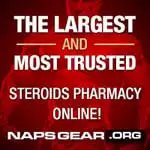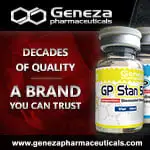macrophage69alpha
New member
interesting (and somewhat conversely- though actually just a reversal situation) clenbuterol is used as a treatment for heart failure treatment with left ventricular assist device.
Am J Physiol Heart Circ Physiol. 2005 Mar;288(3):H1468-76. Epub 2004 Nov 4. Related Articles, Links
Erratum in:
Am J Physiol Heart Circ Physiol. 2005 May;288(5):H2546.
Effects of chronic administration of clenbuterol on function and metabolism of adult rat cardiac muscle.
Soppa GK, Smolenski RT, Latif N, Yuen AH, Malik A, Karbowska J, Kochan Z, Terracciano CM, Yacoub MH.
Imperial College London, National Heart and Lung Institute, Harefield Heart Science Centre, Harefield, Middlesex UB9 6JH, UK.
Clenbuterol (Clen), a beta(2)-agonist, is known to produce skeletal and myocardial hypertrophy. This compound has recently been used in combination with left ventricular assist devices for the treatment of end-stage heart failure to reverse or prevent the adverse effects of unloading-induced myocardial atrophy. However, the mechanisms of action of Clen on myocardial cells have not been fully elucidated. In an attempt to clarify this issue, we examined the effects of chronic administration of Clen on Ca(2+) handling and substrate preference in cardiac muscle. Rats were treated with either 2 mg x kg(-1) x day(-1) Clen or saline (Sal) for 4 wk with the use of osmotic minipumps. Ventricular myocytes were enzymatically dissociated. Cells were field stimulated at 0.5, 1, and 2 Hz, and cytoplasmic Ca(2+) transients were monitored with the use of the fluorescent indicator indo-1 acetoxymethyl ester. Two-dimensional surface area and action potentials in current clamp were also measured. We found that in the Clen group there was significant hypertrophy at the organ and cellular levels compared with Sal. In Clen myocytes, the amplitude of the indo-1 ratio transients was significantly increased. Sarcoplasmic reticulum Ca(2+) content, estimated by rapid application of 20 mM caffeine, was significantly increased in the Clen group. The action potential was prolonged in the Clen group compared with Sal. Carbohydrate contribution to the tricarboxylic cycle (Krebs cycle) flux was increased several times in the Clen group. This increase was associated with decreased expression of peroxisome proliferator-activated receptor-alpha. This study shows that chronic administration of Clen induces cellular hypertrophy and increases oxidative carbohydrate utilization together with an increase in sarcoplasmic reticulum Ca(2+) content, which results in increased amplitude of the Ca(2+) transients. These effects could be important when Clen is used in conjunction with left ventricular assist devices treatment.
Am J Physiol Heart Circ Physiol. 2005 Mar;288(3):H1468-76. Epub 2004 Nov 4. Related Articles, Links
Erratum in:
Am J Physiol Heart Circ Physiol. 2005 May;288(5):H2546.
Effects of chronic administration of clenbuterol on function and metabolism of adult rat cardiac muscle.
Soppa GK, Smolenski RT, Latif N, Yuen AH, Malik A, Karbowska J, Kochan Z, Terracciano CM, Yacoub MH.
Imperial College London, National Heart and Lung Institute, Harefield Heart Science Centre, Harefield, Middlesex UB9 6JH, UK.
Clenbuterol (Clen), a beta(2)-agonist, is known to produce skeletal and myocardial hypertrophy. This compound has recently been used in combination with left ventricular assist devices for the treatment of end-stage heart failure to reverse or prevent the adverse effects of unloading-induced myocardial atrophy. However, the mechanisms of action of Clen on myocardial cells have not been fully elucidated. In an attempt to clarify this issue, we examined the effects of chronic administration of Clen on Ca(2+) handling and substrate preference in cardiac muscle. Rats were treated with either 2 mg x kg(-1) x day(-1) Clen or saline (Sal) for 4 wk with the use of osmotic minipumps. Ventricular myocytes were enzymatically dissociated. Cells were field stimulated at 0.5, 1, and 2 Hz, and cytoplasmic Ca(2+) transients were monitored with the use of the fluorescent indicator indo-1 acetoxymethyl ester. Two-dimensional surface area and action potentials in current clamp were also measured. We found that in the Clen group there was significant hypertrophy at the organ and cellular levels compared with Sal. In Clen myocytes, the amplitude of the indo-1 ratio transients was significantly increased. Sarcoplasmic reticulum Ca(2+) content, estimated by rapid application of 20 mM caffeine, was significantly increased in the Clen group. The action potential was prolonged in the Clen group compared with Sal. Carbohydrate contribution to the tricarboxylic cycle (Krebs cycle) flux was increased several times in the Clen group. This increase was associated with decreased expression of peroxisome proliferator-activated receptor-alpha. This study shows that chronic administration of Clen induces cellular hypertrophy and increases oxidative carbohydrate utilization together with an increase in sarcoplasmic reticulum Ca(2+) content, which results in increased amplitude of the Ca(2+) transients. These effects could be important when Clen is used in conjunction with left ventricular assist devices treatment.


 Please Scroll Down to See Forums Below
Please Scroll Down to See Forums Below 











